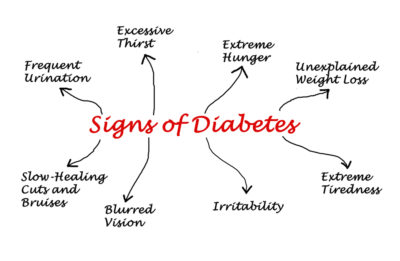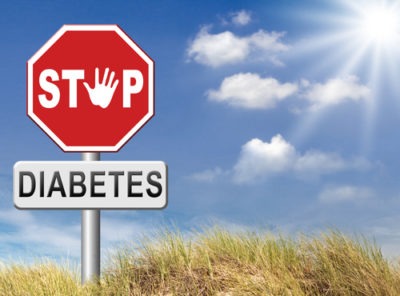The results are in and diabetes is on the rise. According to the Center for Disease Control over 25.8 million Americans suffer from diabetes and more than 25% are prediabetic according to the ADA. People are being told that type II diabetes is “genetic” and that they have to live with the complications for their entire lives. I’m here to tell you the good news: diabetes is nearly 100% preventable and reversable!
Let’s go over some basics, shall we?
What is diabetes?
Diabetes is categorized into two types – type I and type II.
- Type I is generally called “juvenile onset diabetes” and occurs when the immune system attacks the beta cells in the pancreas which produce insulin. The result is inadequate insulin which leads to high blood sugar. Type I diabetics have to be supplemented with insulin the rest of their lives or face life threatening complications and death. Causes that trigger this autoimmune response have been linked to: genetically modified organisms (GMOs), a virus, spinal injury, vaccines, heavy metals, or foods like conventional wheat and dairy or soy. To date, there is no known cure for type I diabetes.
- Type II is characterized by uncontrolled high blood sugar. This type is far more common and affects 90-95% of diabetics. Here, the body produces insulin but is unable to use it properly. The body can handle the increase in blood glucose (BG) for a time but quickly, the insulin receptor sites wear out which leads to complications.
Signs & Symptoms

Complications:
- Neuropathy & loss of limbs
- Atherosclerosis
- Blindness
- Increase of intra-abdominal fat
- Low HDL – the “good cholesterol”
- Impotence
- Cardiomyopathy
- Neurological changes – urination frequency, constipation, light headedness, bloating, heartburn
In both types of diabetes food is the main cause of increased blood glucose and the cause of internal inflammation.
So, how can you beat diabetes?

Dedicate yourself to 60 days and remove these foods from your diet:
- Grains: a huge majority of our grains have been genetically modified (GMO) – especially gluten containing grains like wheat, barley & rye. GMO’s can cause intestinal inflammation thus spiking blood sugar and wrecking havoc throughout your body. Don’t worry I’m not going to take away your bread forever. Stick to it for at least 60 days and in most cases grains can be reintroduced slowly and in moderation.
- Commerical Dairy: 95% of all dairy in America comes from A1 cows which produce casein that causes gut inflammation much like gluten. Milk and milk products from goats, sheep and A2 cows however, can be great for managing blood sugar.
- Refined Sugar: you’d think this one to be obvious but it’s the sneakiest of all culprits. Fruits, in moderation are okay, but check all labels for key words such as: sugar, cane sugar, fructose, dextose, high fructose corn syrup, agave, etc. These foods contain sugar that can rapidly spike blood glucose. The best replacement for sugar is raw stevia.
- Soy, Corn, and Canola oil – almost all of these are GMO foods in the United States. Again, check your labels and if any of these 3 words are on the Ingredients List – don’t eat it.
- Artificial Sweeteners – a study published this year showed that trying to replace sugar containing foods with foods with artificial sweeteners actually increased the risk of abdominal fat, leaving them volnerable to metabolic syndrome and cardovascular diseases. Not to meantion they have been linked to memory loss and threatening to developing babies as they cross into the placenta.
Eat up on:
- High fiber foods: nuts, seeds, beans, vegetables, avocadoes, and berries. The higher the fiber content the slower blood glucose rises.
- Healthy fats: use coconut oil for cooking (not olive oil), organic grass fed butter or ghee. Also, Omega-3’s in salmon and walnuts.
- Foods with a low glycemic index: these foods are generally known to not spike blood sugar. All the foods above are low glycemic index foods.
Supplements
These supplements have been found to reduce and help regulate blood sugar.
- Chromium (600mcg/day): high amounts are found in broccoli, green beans and tomatoes. It’s role includes signaling the insulin response, helping to drive sugar into the cells more quickly after a meal.
- Cinnamon (2 tsp/day) add it to tea or a smoothie to aid in insulin sensitivity.
- Fish oil (1000mg/day) – Omega 3’s are crucial for proper blood sugar control
- ALA – Alpha Lipoic Acid- (300-1200 mg/day) – an antioxidant that helps reduce symptoms of neuropathy and improves insulin sensitivity
- Fiber powder – according to the Institute of Medicine we should be consuming between 25-38g of fiber per day. Most American’s only consume around 15g. Fiber from fruits, vegetables and legumes can reduce the speed blood sugar rises. I recommend a high quality fiber powder with sprouted seeds.
Exercise
Exercise can have huge benefits on reducing blood sugar and insulin sensitivity. It also helps weight loss and increase lean muscle. To prevent and reverse diabetes I recommend 20-30 mins of cardio per week. Interval training, like HIIT training has been shown to have the best and most effective results. Also, weight training 3-5 days/ week is recommended.
Don’t know where to start when it comes to exercise? Ask yourself – What is it that I like to do? If it’s active – do it & make it fun! Exercise isn’t meant to be boring. Have a friend or family member join you and have fun with it. Get creative and be active daily!
References:
CNN. Reversing Diabetes is Possible.http://www.cnn.com/2011/HEALTH/01/28/reverse.diabetes/ (accessed September 2013).
Nurs Stand. 2015 Apr 8;29(32):15. doi: 10.7748/ns.29.32.15.s18.
http://www.webmd.com/food-recipes/fiber-how-much-do-you-need
http://pubmed.com/pmc/articles/PMC3767714/


